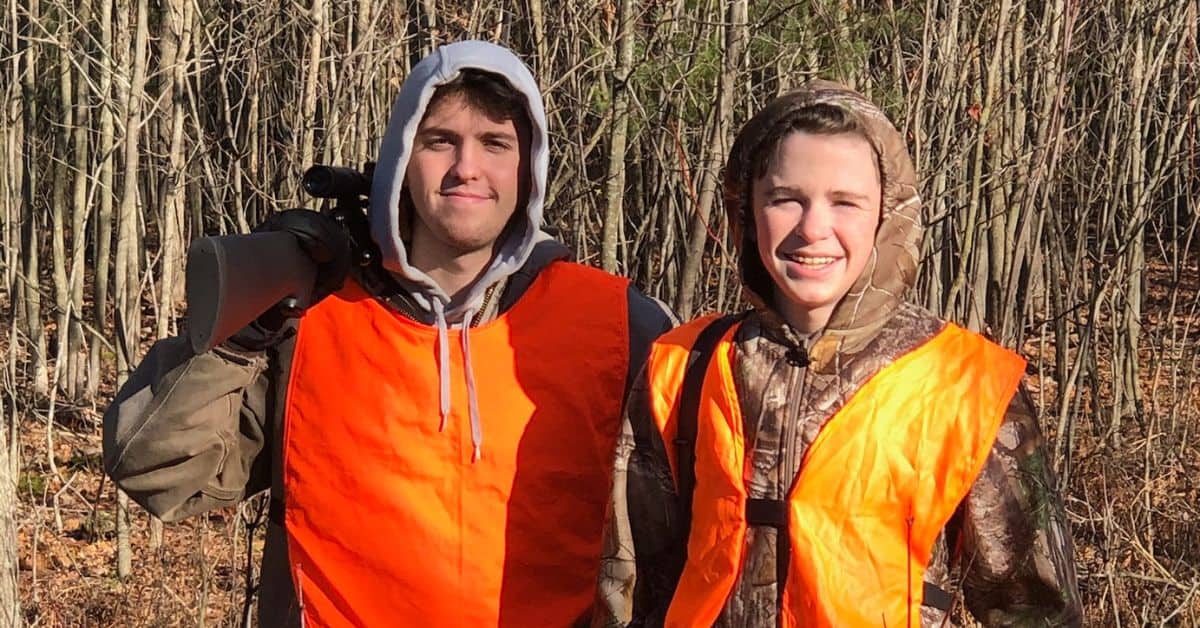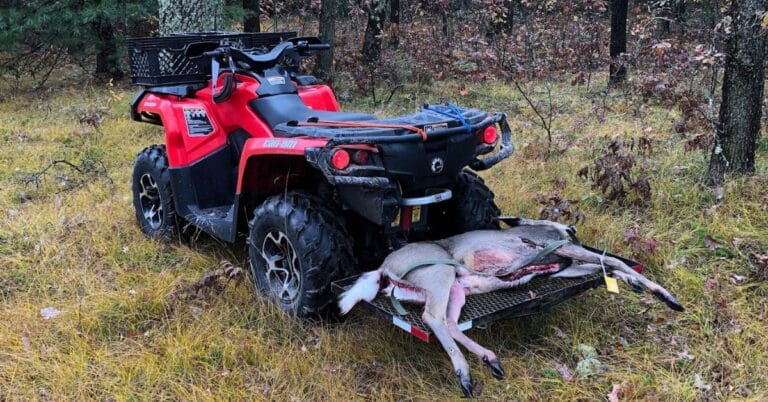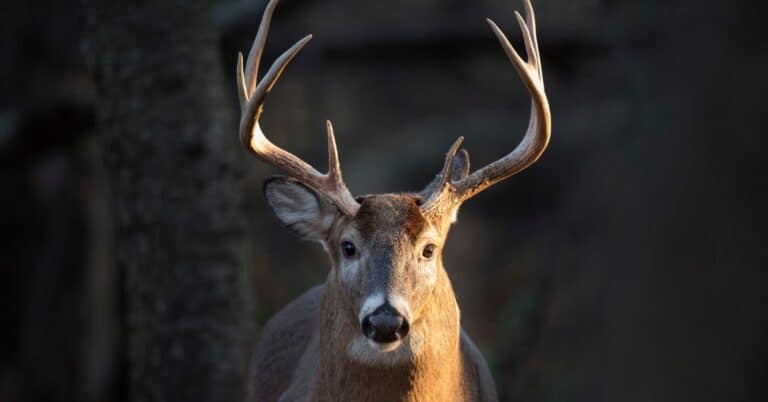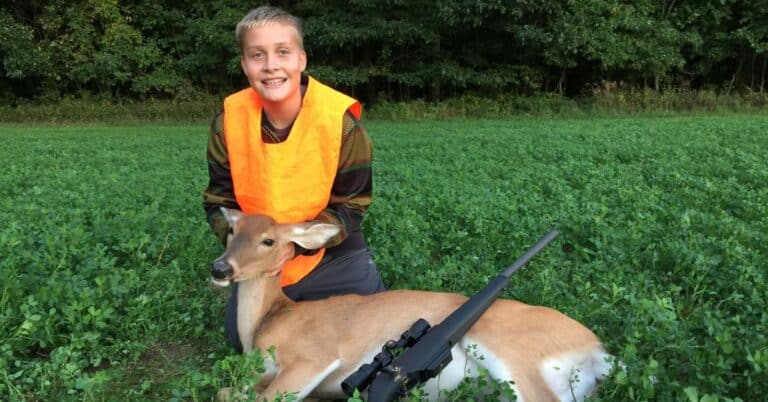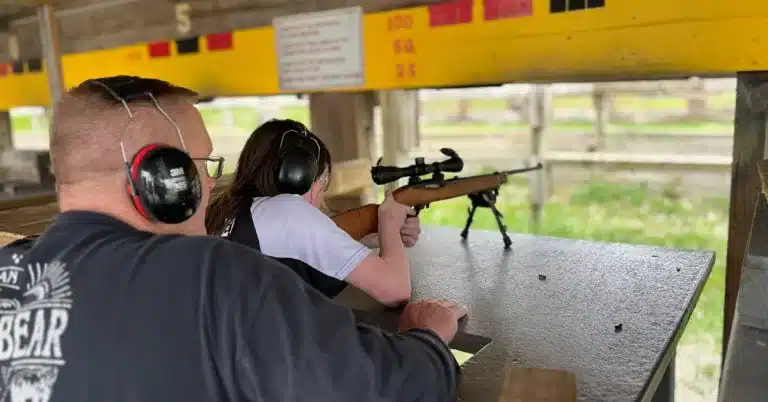5 Lessons from Tracking Deer with Teenagers.
Hunting with Patience in Michigan:
Ever tried tracking deer with teenagers? Step into the Michigan woods with me, where every step is a lesson. Every decision builds on teaching the next generation of hunters. Walk with me through a food plot, where a successful shot leads to a tracking adventure. Travel back to a memorable moment when my stepson Max’s shot set the stage for finding his first deer and the joy of success.
His First Shot at a Deer
Before Max set off to his designated spot, I emphasized gun safety and the importance of marking the last seen deer spot. His first shot, about a mile away, echoed through the quiet woods. It was a happy moment for Max, but the deer did not drop and we would need to track it.
Take Your Time Tracking Deer
Max, fueled by adrenaline, wanted to run after the deer and start tracking it right away. I urged him not to run, cautioning against contaminating the area with tracks and potentially covering blood trails. We need to wait a little bit. “Exercise patience,” I said, “that is the skill you need to learn now.”
Tracking Challenges and Vague Directions
Joining Max to track the deer, my other son, Ethan and I faced the challenge of vague directions. As we traversed the field, I instructed the boys to stay behind, emphasizing the importance of attention to detail. In the woods, the boys unintentionally broke the rule, adding complexity to our tracking journey.
Toilet Paper Trail Markers
Reaching the edge of the plowed field, a drop of blood marked a breakthrough in our tracking quest. Instead of rushing ahead, I introduced a creative approach—using toilet paper as markers. A practical method creating a visible trail next to blood drops, ensuring a clear direction even if the hunt paused and resumed later. It would also help us find our way back to where we started if we got lost.
What if it Rained?
Sharing a crucial tip about tracking in the rain, I highlighted the effectiveness of marking the trail with toilet paper. I told Max that “Rain may wash away the blood trail. But the toilet paper markers will guide a hunter even after bad weather conditions.”
Patience Paid Off: The Deer is Found
After 10 or 15 minutes, Max discovered the deer, relishing the thrill of the find. Watching the huge smile appear on his face at this moment is an image I’ll never forget. This experience was an example of the essence of tracking—patience, precision, and attention to detail.
The Suspense is Part of the Fun
The suspense of tracking a deer lies not just in the chase but in the anticipation of the unknown. Every step taken, every decision made, builds the suspense of the hunt. It’s a journey where each moment shapes the outcome. Each skill taught and each tool mastered should become a part of the learning and training steps.
Wisdom from Experience
As we continued our tracking journey, the woods unfolded lesson after lesson. It wasn’t just about finding the deer; it was about unraveling the secrets of the hunt. I was thankful he was willing to listen to the older generation and a more experienced hunter. Tracking a deer for a long time can also become discouraging. The importance of patience, the art of observation, and the creative solutions—are all important pieces of our tracking experience.
Deer Tracking Signs
In the silent woods, where each rustle of leaves holds a story, Max’s discovery wasn’t just about the deer. It was about understanding the language of the wilderness, deciphering the subtle signs left behind, and becoming a part of a narrative that extends beyond the thrill of the hunt.
Celebrating Deer Tracking Success
As the tracking journey unfolded, Max’s success became a celebration of not just a hunted deer but of acquired skills. Embrace the unpredictability of tracking, where every challenge is an opportunity to learn, and every discovery is a moment to savor.
5 tips for tracking deer
- Be Patient: After a successful shot, resist the urge to rush into the woods. Patience prevents messing up the area and helps maintain a clear trail.
- Pay Attention: Tracking isn’t just about following steps. Observe where the deer was initially and the direction it took. Small details matter in solving the tracking puzzle.
- Use Creative Markers: When traditional methods fall short, get creative. Use toilet paper as markers next to blood drops. This practical approach ensures a visible trail, even if tracking is interrupted.
- Adapt to Weather: Tracking in rain can be challenging. Mark the trail with toilet paper to keep indicators intact if the blood trail washes away. Being adaptable helps overcome unpredictable weather.
- Silent Discovery: Let the woods guide you. Embrace the quiet moments of tracking, where every sound holds a story. The thrill is more than finding the deer; it’s understanding the language of the wilderness.
In the end, Max’s success is more than a trophy—it’s proof of mastering tracking skills. Whether you’re new or experienced, these tips will improve your tracking game and turn each hunting trip into an exciting adventure. So, venture into the woods and let the suspense guide you. Next step: gutting a deer!

